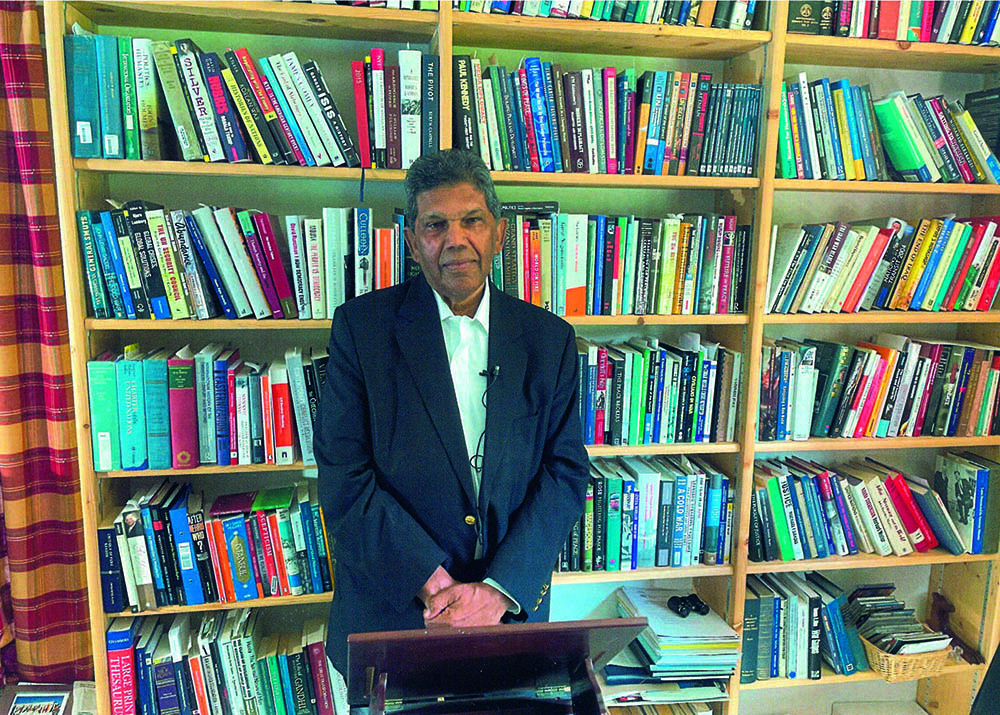Seventh Chancellor of the University of GuyanaFormer UN Under-Secretary-General for Human Rights
The Guyana Human Rights Association marks its forty-fifth anniversary this year and it is fitting to reflect on the contribution the GHRA has made to the history of Guyana.
I have been fortunate to have witnessed the founding of the GHRA, to have accompanied it throughout these past 45 years, and to have taken part in several of its events. I have seen its struggles from within and without.
The GHRA issued a press release on 2 November on the results of its 25th General Members Meeting, held on 28 October, 2024. It is appropriate to note some elements of the press release.
The General Members Meeting was well attended. It considered the Executive Secretary’s Report on the past five years’ activities. The Report covered, a wide range of issues, including the use of natural resources in Guyana; the impact of gold mining on Guyana’s fresh-water rivers, the excessive use of mercury and the impact of mining on indigenous communities; constitutional reform; corruption; violence against women; LGBTQI rights; sexual offences; the administration of justice; and the rights of persons living with disabilities.
The report provided information on GHRA annual training programmes for staff of Guyana’s Prison Service. And the Treasurer presented the Audited Reports for the years 2021 and 2022. The Annual Membership fee is now $1,000.
Resolutions were tabled, discussed, amended, and adopted on: electoral reform; combatting plastic pollution; and ‘natural resources wealth as the basis for equalizing wealth in Guyana’.
Elections were conducted by a Returning Officer. Three Co-Chairs were elected for the next two years. And the Executive Committee was elected for the next two years.
Here is a transparent association, with its activities and records in the public domain. I have seen and followed its activities from the inception, and over the past 45 years. Governments in power have found the activities of the GHRA uncomfortable and adherents of the major parties have, on occasions, been sharply critical of it. That is part of the cut and thrust of politics. But I would submit that the GHRA has invariably sought to act in good faith, even if its actions and assessments might be open to discussion at times – such as the allegation that it did not react to the electoral rigging in 2020.
It was in 1977 that I met the founders of the future GHRA for the first time. I was visiting Guyana from the UN and attended a lecture at the University of Guyana by the late, dynamic Walter Rodney. Constitutional and electoral reforms were on the minds of everyone, and it was constitutional and electoral reforms that led to the formation of the GHRA in 1979, as is mentioned in the GHRA press release mentioned earlier.
My understanding is that the GHRA played a leading role in the introduction of the ‘C’ – civic component in what is nowaday’s PPP/Civic.
The future leaders of the GHRA learned that I was serving in the UN Human Rights Office and sought me out for a discussion. Two years later, the GHRA was formed and I met and interacted with many of its leaders, including the late Gordon Todd, the late Miles Fitzpatrick, Michael McCormack and others. I remember how courageous these human rights leaders were, and how fearful some of them were about the risk of reprisals by the then Government. These courageous leaders prudently lived their faith in democracy, the rule of law, and respect for human rights.
As events unfolded in Guyana, a broad range of foodstuff was banned in Guyana and there were major food shortages in the country. The GHRA organized, in 1983, at the Under-Croft of St. George’s Cathedral, a major conference at which I spoke, on the right to food as well as other economic, social and cultural rights.
The conference, presided over by a member of the Guyana Bar Association, was packed to capacity. Dr Cheddi Jagan attended. I recall one of Guyana’s leading academic personalities explaining to me afterwards that he did not attend the event because he knew that the secret service was registering the number plates of cars parked around the conference site. He needed his car and chose not to take the risk of attending. This was a time of great fear in Guyana.
I followed the efforts of the GHRA to buy a piece of land on Hadfield Street and to construct the Guyana Human Rights Centre, using Members’ contributions and local donations. I interacted with the builder, Mr Alton Brown, a fine person. I was present at the opening of the Human Rights Centre and spoke at the event. The Human Rights Centre stands proudly today.
I attended events, conferences, and other activities organized by the GHRA, including at the Georgetown City Hall. One of these events, attended by future President David Granger, discussed unifying principles of the Guyanese people. I submitted on that occasion “Ten Principles for a New Guyana”.
At the request of the GHRA I had conversations with Bishop Randolph George on principles that could help bring the various strands of the Guyanese population together. I contributed to an address by Bishop George on this topic. He was such an outstanding individual and a Guyanese patriot.
Over the years, the GHRA has researched numerous thematic issues affecting human rights in Guyana and written landmark reports on topics such as violence against women, spousal violence, the rights of children, the rights of indigenous peoples. I have recorded some of these efforts in a chapter of a book on the protection roles of human rights NGOs.
At the invitation of the GHRA, InterRights organized in Guyana a major human rights conference on human rights which issued the Georgetown Declaration on the rule of law and respect for human rights. The great Indian Chief Justice, P. Bhagwati, with whom I worked closely, was one of these who attended.
GHRA has run campaigns on various issues such as the rights of children and has worked assiduously among young people to promote tolerance and understanding.
It is in the nature of the activities of a body such as the GHRA that it takes flack from supporters of governments of the day. I have seen this in countries throughout the world. But, at the end of the day, the GHRA has made a remarkable contribution to the history of Guyana these past forty-five years.
It would be fitting for historians at the University of Guyana, and elsewhere, to sponsor studies on the contribution of the GHRA to the history of Guyana. The historical records are at the Guyana Human Rights Centre. I can think of no organization that has made a better contribution to the history of the Dear land than the GHRA.
And I wonder how Guyana, as a country, might honour the contributions of the GHRA. Dare one hope for magnanimity from Guyana’s political leaders – of whichever party?
To paraphrase Ted Braithwaite, the GHRA has ‘Served With Love’ over these past forty-five years.










